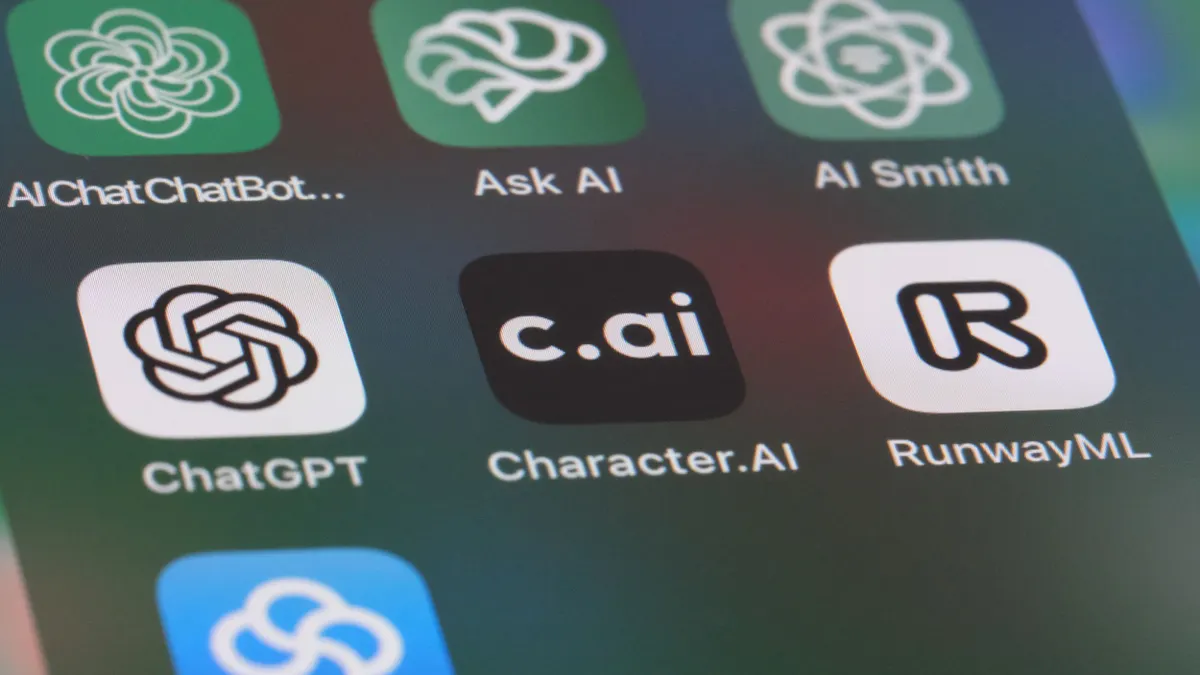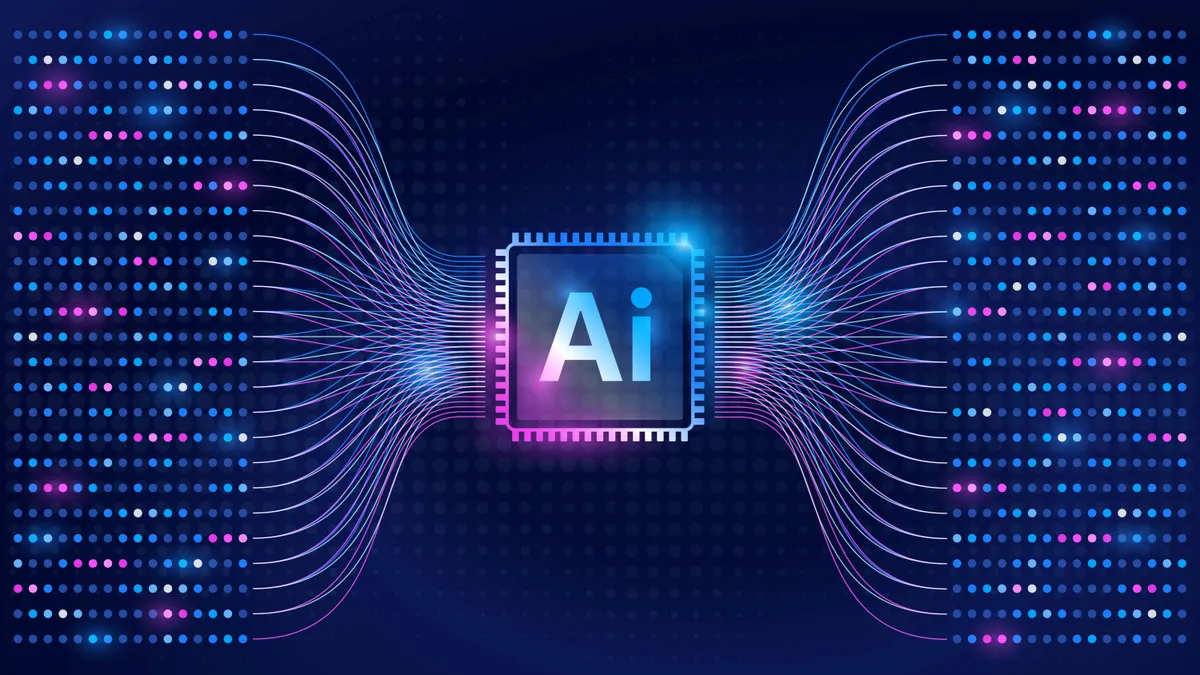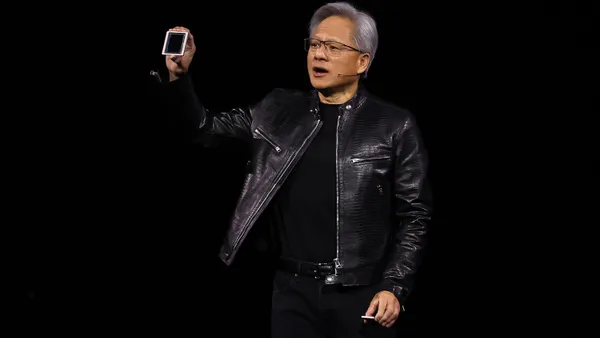July marks the midway point of 2018 and creates an opportunity for businesses to do a gut check on where they are in terms of core projects. Still haven't filed that RFP or taken that legacy server offline? It may be time.
At the start of the year, CIO Dive forecasted trends that would define technology portfolios in 2018, evaluating everything from the cloud and cybersecurity to AI and big data efforts.
CIO Dive also took a look at the trends defining CIO responsibilities. Now, halfway through the year, it's time to take a look back on previously identified trends to see where industry adoption lies.
1. The death of 'digital transformation'
"Digital transformation" is the buzzword of the decade, preceding "blockchain" and "artificial intelligence" as the phrase excitedly uttered by forward-looking IT managers hoping to transform their business.
The phrase has become synonymous with modernizing organizations' technology, but it has also morphed into the answer for every modern technology problem.
At the beginning of the year, CIO Dive forecast the end of companies bandying about digital transformation in favor of a shift toward "intelligent everything" and the evolution of companies shifting to operate more like technology companies.
Where are we now: Organizations have begun to take a more realistic approach to digital transformation. It "was the magic dust that solved every problem last year. Now, it's more the table stakes to survive," said John Parkinson, affiliate partner at Waterstone Management Group, in an interview with CIO Dive.
While digital transformation used to be the label for any modernization a company wanted to do, business leadership is beginning to ask tough questions of technology leadership about the logistics of modernization.
Businesses have injected the phrase "digital transformation" with new life by asking far more realistic questions than they had in years past. In essence, it's matured, said Steven Hall, president EMEA, partner digital advisory services at ISG, in an interview with CIO Dive.
Companies are heavily invested in automation and AI, and upon seeing good returns are investing in them back in the business, said Hall. Organizations are looking to move forward with technology portfolios, moving workloads to the cloud, increasing the use of mobile apps and increasing Software as a Service revenues.
As Parkinson puts it: "Digital transformation is dead. Long live digital transformation."
2. Businesses will fall into compliance mania
Four words: General Data Protection Regulation.
GDPR's deadline has passed, but the six months leading up to the regulation's implementation sent businesses across sectors scurrying to comply. For some, compliance was easily met with a simple email to list subscribers and an opt out button. For others, like Google and Facebook, becoming compliant was not such an easy task.
In response to the deadline, CIO Dive forecast companies would start constructing data and analytics portfolios compliant from the onset of their development.
Where are we now: May 25 came and went and the internet was in a near craze over the slew of opt in emails delivered to inboxes.
It was almost like the "Y2K panic," Hall said. But in general, people are now over the fervor. Until fines are levied against companies, GDPR mania will remain at a lull.
The industry is watching for the first fines, which would allow organizations to reset their expectations of the standards, he said.
The one thing GDPR did was raise people's awareness about privacy and the amount of data businesses collect on them. There is still much room for interpretation in the law, but companies are concerned about the significant consumer backlash that could occur from data misuse, Parkinson said.
3. The 'give me' attitude toward advance technology will increase
As advanced technology becomes more accessible, companies will continue to exhibit a "give me" attitude, looking to adopt new systems regardless of whether they will work in their technology portfolio. With industry hype circulating, some organizations favor flashy technology over functionality.
Where are we now: This attitude in business has been going on for decades. Hall refers to it as the "Barron's effect;" Parkinson calls it "managed by magazine."
The premise is, a senior executive will read a financial publication and see an article about a new technology making waves across sectors. The executive will, in turn, go to a business's technology leaders and ask, "what are we doing about X."
Recently, the technology under inquiry has been blockchain or artificial intelligence. Last year it was chatbots.
Industry has the belief it should be completely engaged with the startup community, Hall said. But it's starting to have a negative impact for CIOs and other technology executives forced to respond.
4. Technology departments will work to serve the true customer
More companies are turning to technology to assist customers, a pivot from relegating IT to keeping operations running. This has created a technology landscape where teams are pivoting to serve both internal and external customers.
In 2018, CIO Dive forecast technology teams would continue to evolve and break out of technology silos, allowing for more product focus.
Where are we now: Companies are improving technology services to businesses processes that make money, but it's still the exception rather than the rule.
Tech departments are slowly but steadily waking up to an understanding of how their businesses make money, Parkinson said. If they want to continue to evolve to become more customer-centric, they will have to pivot to a more product-oriented point of view.
Some progressive organizations have worked to embrace DevOps and decentralize IT. The result is some companies have IT completely aligned with the product or business unit responsible for the project, Hall said.
This shift will continue to occur as the cloud allows technology teams to decentralize because less attention is required to keep core services operational, he said.
5. CIOs, not CDOs, will be responsible for corporate technology portfolios
In the last few years, C-suite technology attention turned to a new role: The chief digital officer. Hype declared these executives would bring about enterprise change, which could spell the end of the CIO.
But in late 2017 and the start of 2018, attention returned to the CIO. The executives are starting to morph into business leaders who keep systems running while crafting portfolios for the future. If organizations want a CDO, they're usually brought in to make a strategic shift to adding digital aspects to commercial products.
Where are we now: Titles aside, technology is becoming more of a "team sport," Parkinson said. Instead of portfolios and modernization efforts failing to a single person, it's a group of people who have responsibility.
Whether it's a CIO, CDO or a CTO, senior leaders are beginning to work together to establish coordinated technology strategies. They all work together to help create the next platform or infrastructure and help accelerate innovation.




















